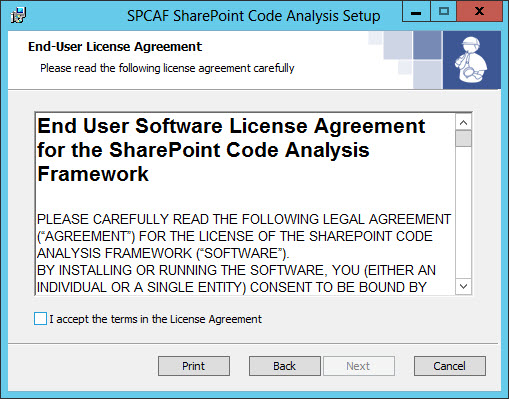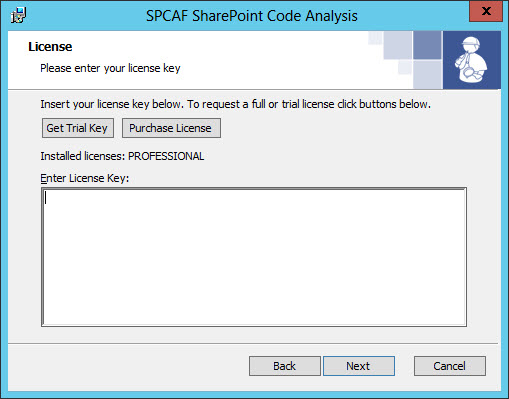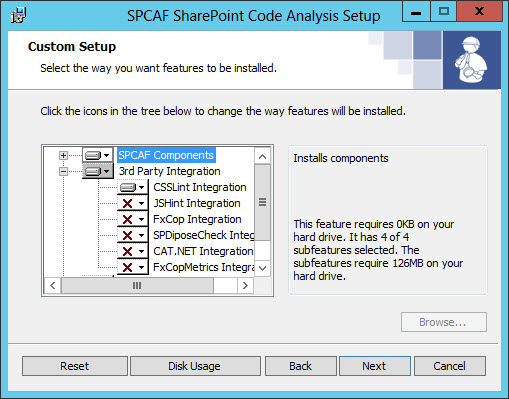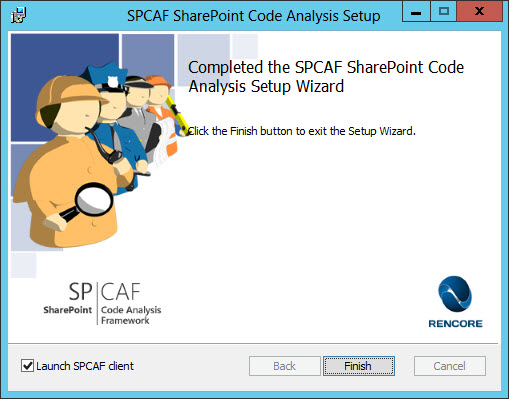

How to: Install SPCAF |
Install SPCAF
Note: Before the installation you have to close all running instances of Visual Studio. The setup cannot proceed if Visual Studio is running.
Also make sure that your system meets the system requirements.
Run setup application (e.g. "SPCAF.Setup.msi") and follow the instructions.

Accept the End User License Agreement (EULA)
In order to procees you need to accept the enduser license agreement.

Enter License Key
SPCAF requires a valid license. The license is saved in a license file.
This license file is stored in the user local AppData directory in file 'License.lic'. The license key is checked during each analysis.
In order to try out SPCAF you can request a trial license key by clicking "Request Trial".
Enter your license key into the textbox and proceed with the installation.
Note: The entered license key will not be validated during installation. You can proceed with installation, but before using SPCAF you need to save your License.lic manuelly in installation directory of SPCAF.

Select preferred Components
Decide which components of SPCAF you want to install.
Note: Not all 3rd party analyzer integration is activated by default as some like SPDisposeCheck or JSHint are now obsolete because SPCAF has its own implementation of these rules.
The TFS/VSOnline Team Build integration works only with an SPCAF Server license or the trial key.

Installation
The installer will now install all selected components, create entries in the start menu and register SPCAF in Visual Studio.

Finish
After finishing the installation you can start Visual Studio and can run SPCAF for your SharePoint projects or alternatively execute the SPCAF standalone application.

